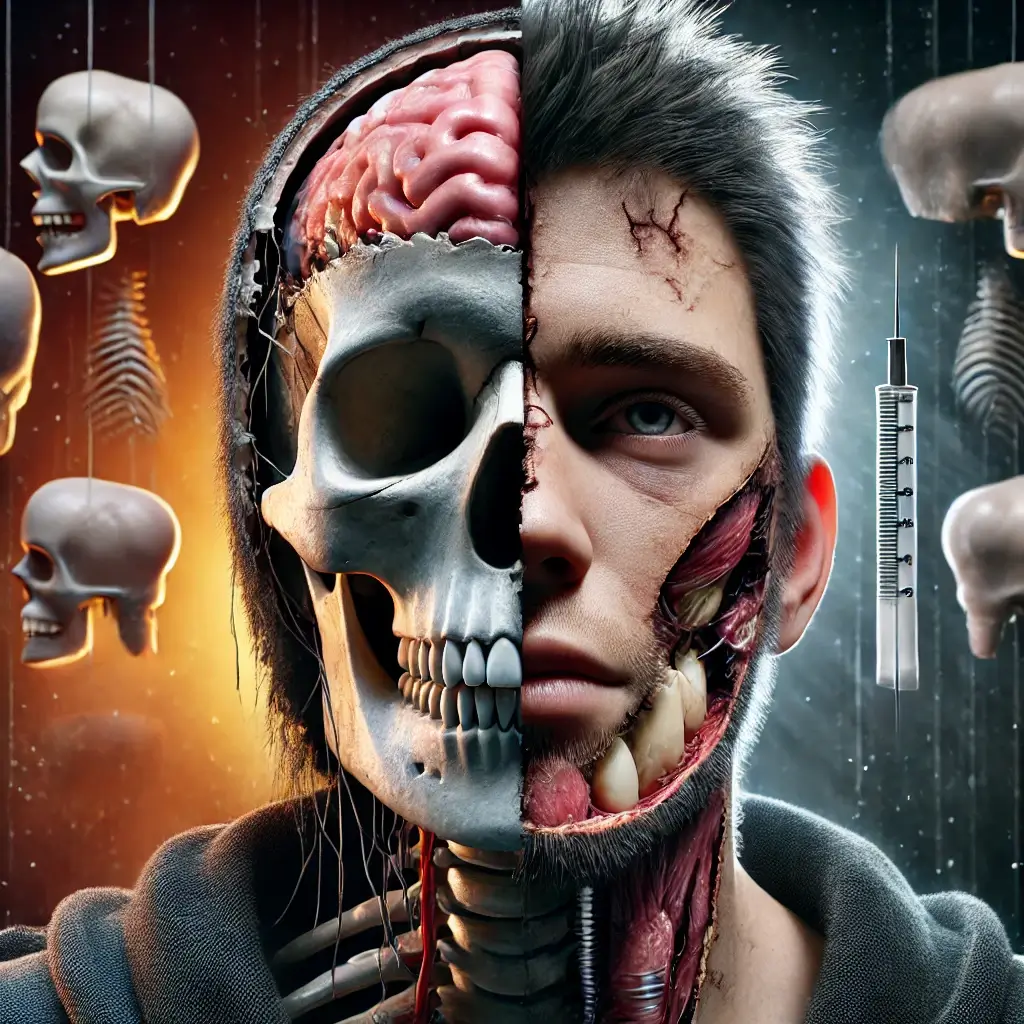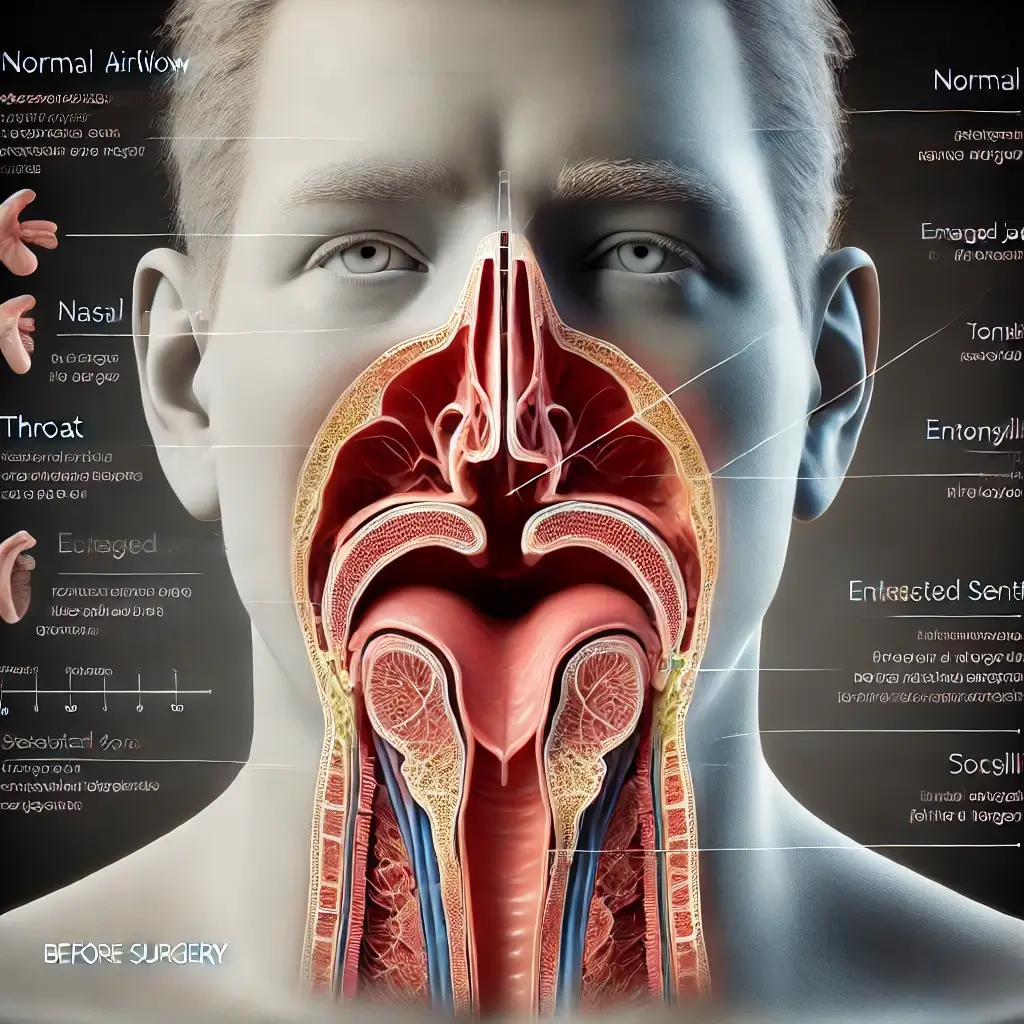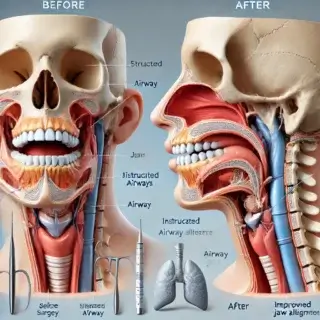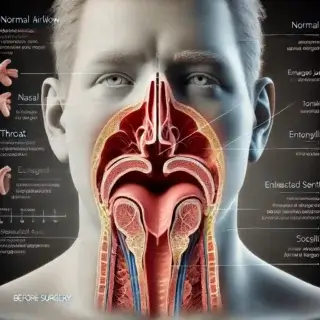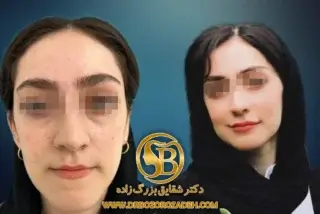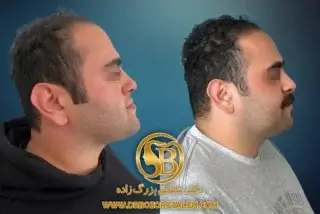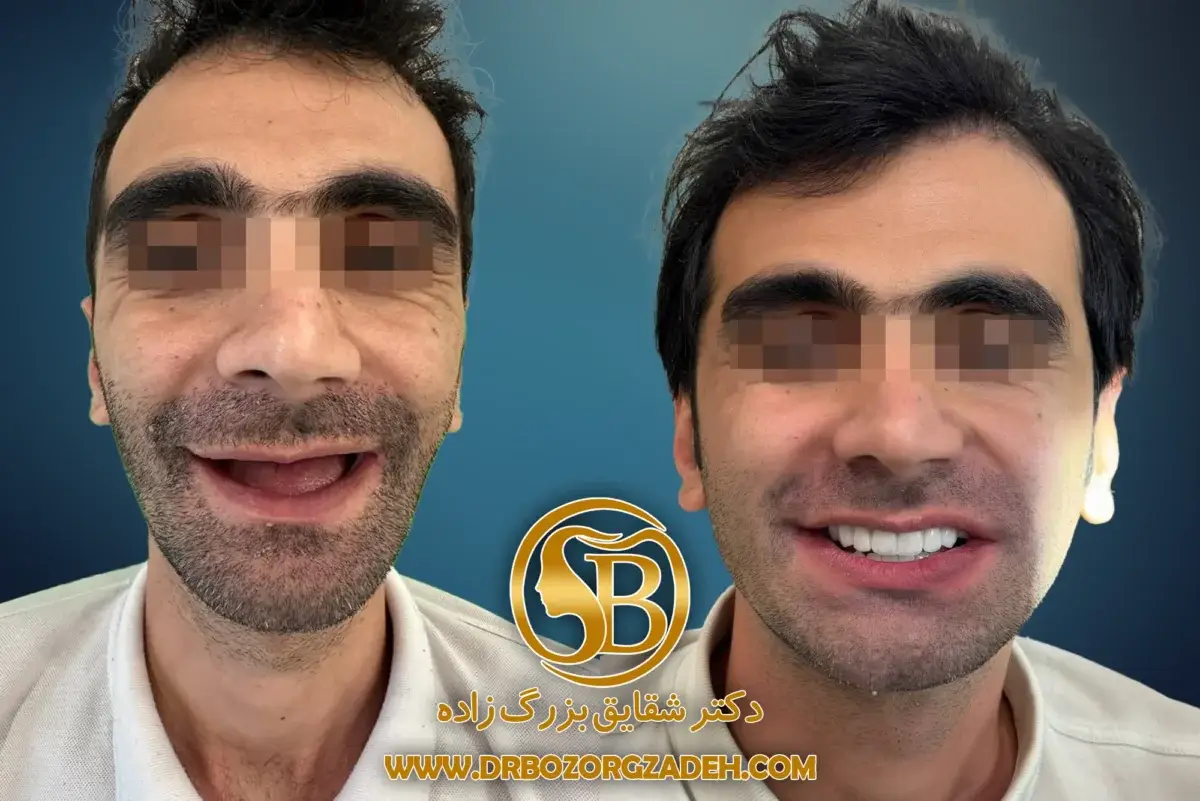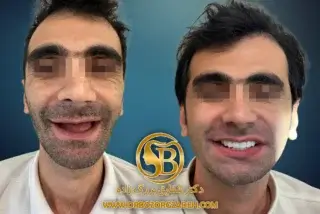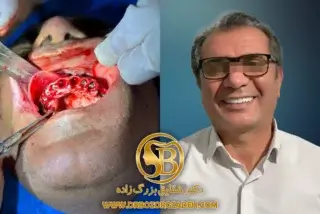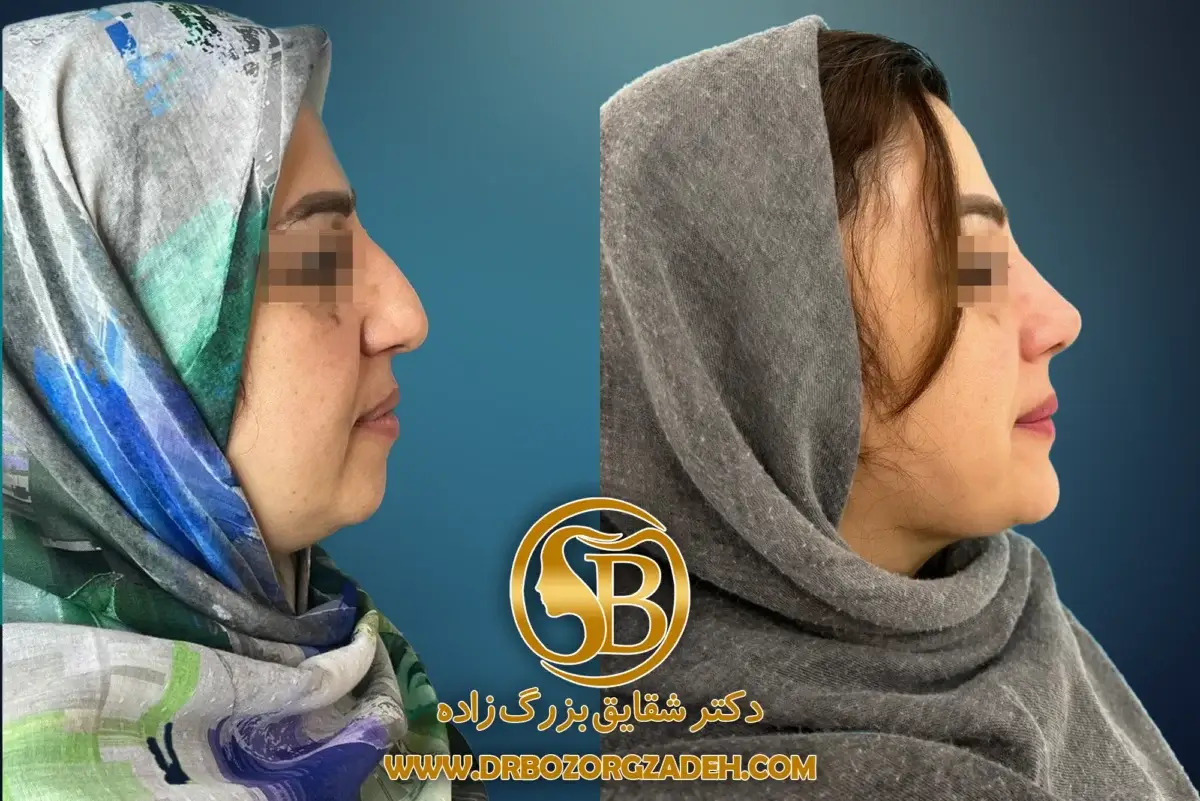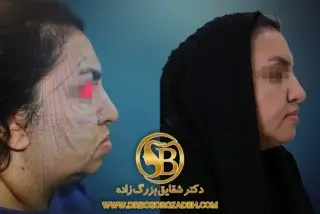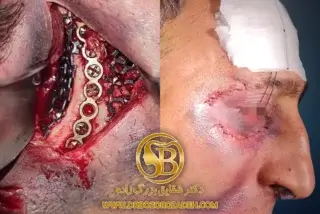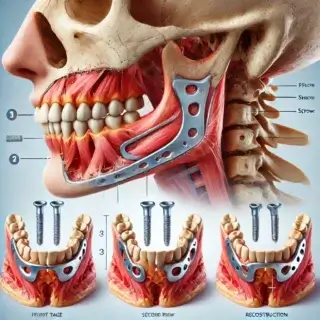The chin plays a key role in the balance and harmony of facial features. A recessed or small chin can affect the overall appearance of the face, disrupting the balance between the nose, chin, and lips. To address this issue, there are two main options: chin filler injection or gel application and genioplasty surgery. Below, the features, advantages, and limitations of each method are discussed to help you choose the best option for you.
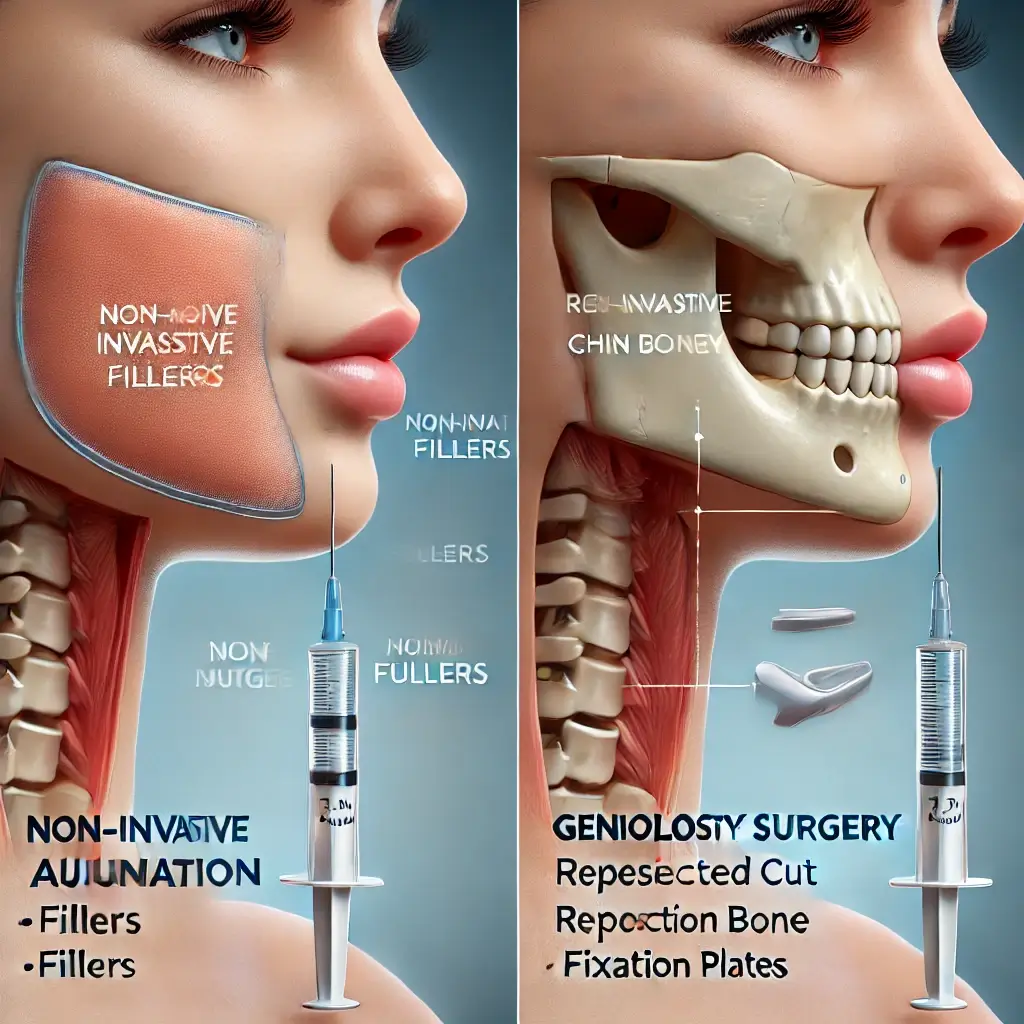
1. Chin Filler Injection: A Non-Surgical and Quick Solution
Chin filler injection is a non-invasive method to improve the appearance of the chin. This procedure involves injecting filler materials (like hyaluronic acid) into the chin area to enhance its volume and shape.
Advantages of Chin Filler Injection:
- Non-invasive: No need for surgery or anesthesia.
- Immediate results: Visible right after the procedure.
- Adjustable: Results can be modified or corrected in subsequent sessions.
- Short recovery time: Patients can return to daily activities immediately.
Limitations of Chin Filler Injection:
- Temporary results: Lasts between 6 and 18 months on average.
- Limited impact: Suitable for minor to moderate adjustments; not ideal for significant changes.
- Requires maintenance: Regular sessions are needed to maintain results.
Learn more about non-surgical beauty services
2. Genioplasty Surgery: A Permanent and Comprehensive Solution
Genioplasty, or chin advancement surgery, is a surgical procedure used to correct severe chin recession. This surgery involves cutting and repositioning the chin bone or using chin implants to achieve the desired volume.
Advantages of Genioplasty:
- Permanent results: Unlike chin filler injection, no maintenance is required.
- Comprehensive changes: Suitable for those needing significant corrections.
- Facial harmony: Provides natural and balanced results that complement other facial features.
Limitations of Genioplasty:
- Invasive: Requires surgery and anesthesia.
- Recovery period: Full recovery may take several weeks.
- Surgical risks: Risks include infection, swelling, or scarring.
Learn more about genioplasty surgery
Comparison Between Chin Filler Injection and Genioplasty Surgery
| Feature | Chin Filler | Genioplasty Surgery |
|---|---|---|
| Longevity | Temporary (6 to 18 months) | Permanent |
| Recovery Time | Short (a few hours to a few days) | Longer (a few weeks) |
| Cost | Lower | Higher |
| Degree of Change | Minor adjustments | Significant transformations |
| Invasiveness | Non-surgical | Surgical with anesthesia |
Which Option is Right for You?
- If you are looking for a quick and temporary solution or need only minor adjustments, chin filler injection is a suitable choice.
- If you require significant and permanent changes and are comfortable with surgery, genioplasty is a better option.
Consulting with a cosmetic specialist or maxillofacial surgeon is the best way to determine the right method for you.
Specialized Consultation in Qaemshahr
In Qaemshahr, chin filler injections and genioplasty surgeries are provided by experienced specialists using modern equipment. To consult and choose the best treatment option, you can contact Dr. Shaqayeq Bozorgzadeh, a maxillofacial surgeon.
Book an appointment or contact us
View successful chin surgery examples
Chin Filler Injection for Chin Advancement
Chin filler injection is a non-surgical and minimally invasive method to enhance chin volume and create a more symmetrical and harmonious appearance. It is an ideal choice for those seeking quick changes without surgery.
Continue exploring the details of the benefits and considerations for both methods to make an informed decision!
Benefits of Chin Filler Injection for Chin Advancement
1. No Surgery or Anesthesia
Chin filler injection does not require incisions or anesthesia, making it a non-invasive option. This feature makes it a preferred choice for many over surgery.
2. Immediate Results
One of the key advantages of chin filler injection is the ability to see results immediately after the procedure. The changes are visible right away without the need to wait for long recovery periods.
3. Adjustable Results
If you are unsatisfied with the outcome, the filler material can be adjusted or removed. This allows for further modifications or a return to the original state.
4. Short Recovery Time
There is little to no recovery time needed. Patients can resume their daily activities right after the procedure, with only minor swelling or bruising that typically resolves within a few days.
Limitations of Chin Filler Injection for Chin Advancement
1. Temporary Results
The filler material is gradually absorbed by the body, with effects lasting between 6 months to 2 years. Subsequent sessions are needed to maintain the results.
2. Limited for Major Changes
Chin filler injection is more suitable for minor to moderate adjustments. It cannot permanently alter the fundamental structure of the chin, and for more extensive changes, surgical options like genioplasty are recommended.
Chin Filler Injection or Chin Surgery: Which is More Suitable?
- If you are looking for a temporary, non-surgical solution, chin filler is a good option.
- If you need structural changes with permanent results, genioplasty might be a better choice.
Consultation with a beauty specialist or a maxillofacial surgeon can help you determine the best option for your needs.
Genioplasty Surgery for Chin Advancement
Genioplasty, or chin advancement surgery, is a specialized procedure in which the chin bone’s position is altered to create better balance and harmony in the face. This method is suitable for individuals with severe chin recession or structural issues who seek permanent and significant changes.
Advantages of Genioplasty
1. Permanent Results
Unlike chin filler injections, which require regular maintenance, genioplasty offers permanent results. Once the surgery is completed, there is no need for repeat treatments.
2. Enables Larger Adjustments
This method allows the surgeon to make significant changes to the position, size, and angle of the chin. Genioplasty is an ideal option for patients who need extensive corrections.
3. Improves Chin and Facial Structure
In addition to enhancing appearance, genioplasty addresses structural issues with the chin. This method not only improves the chin’s look but also enhances the overall facial balance.
Limitations of Genioplasty
1. Longer Recovery Period
Recovery after genioplasty usually takes several weeks. During this time, patients may experience swelling, bruising, and discomfort.
2. Requires Surgery and Anesthesia
This method involves open surgery and general anesthesia, which may be a concern for some individuals.
3. Potential Complications
Like any surgery, genioplasty carries risks such as infection, bleeding, and altered sensation in the chin area. These complications are rare and can be minimized by choosing a skilled surgeon.
Steps of Genioplasty Surgery
- Initial Consultation and Evaluation: The surgeon assesses the patient’s chin bone and facial structure and plans the surgery.
- Anesthesia: The surgery is performed under general anesthesia to ensure patient comfort.
- Chin Bone Cutting and Repositioning:
- An incision is made inside the mouth or under the chin.
- The chin bone is repositioned to a new location and fixed with screws and plates.
- Closure of Incisions: The incisions are closed with absorbable sutures, completing the procedure.
- Recovery and Follow-Up: The patient must regularly visit the surgeon to monitor healing and prevent complications.
Learn more about maxillofacial surgery
Why Choose Genioplasty?
- If you are looking for permanent and significant changes, genioplasty is a suitable option.
- This method provides the best results for individuals with severe chin recession or structural issues.
- By selecting a skilled surgeon, you can achieve natural and harmonious results that complement your face.
Consultation and Choosing the Best Method
For the best outcomes tailored to your facial structure, consulting an experienced specialist is the first and most important step. A skilled specialist will thoroughly assess your jawbone, chin, and beauty goals to recommend the ideal treatment method. Such consultations not only provide clarity but also help prevent undesirable results or complications.
Book a Consultation or Contact Us

